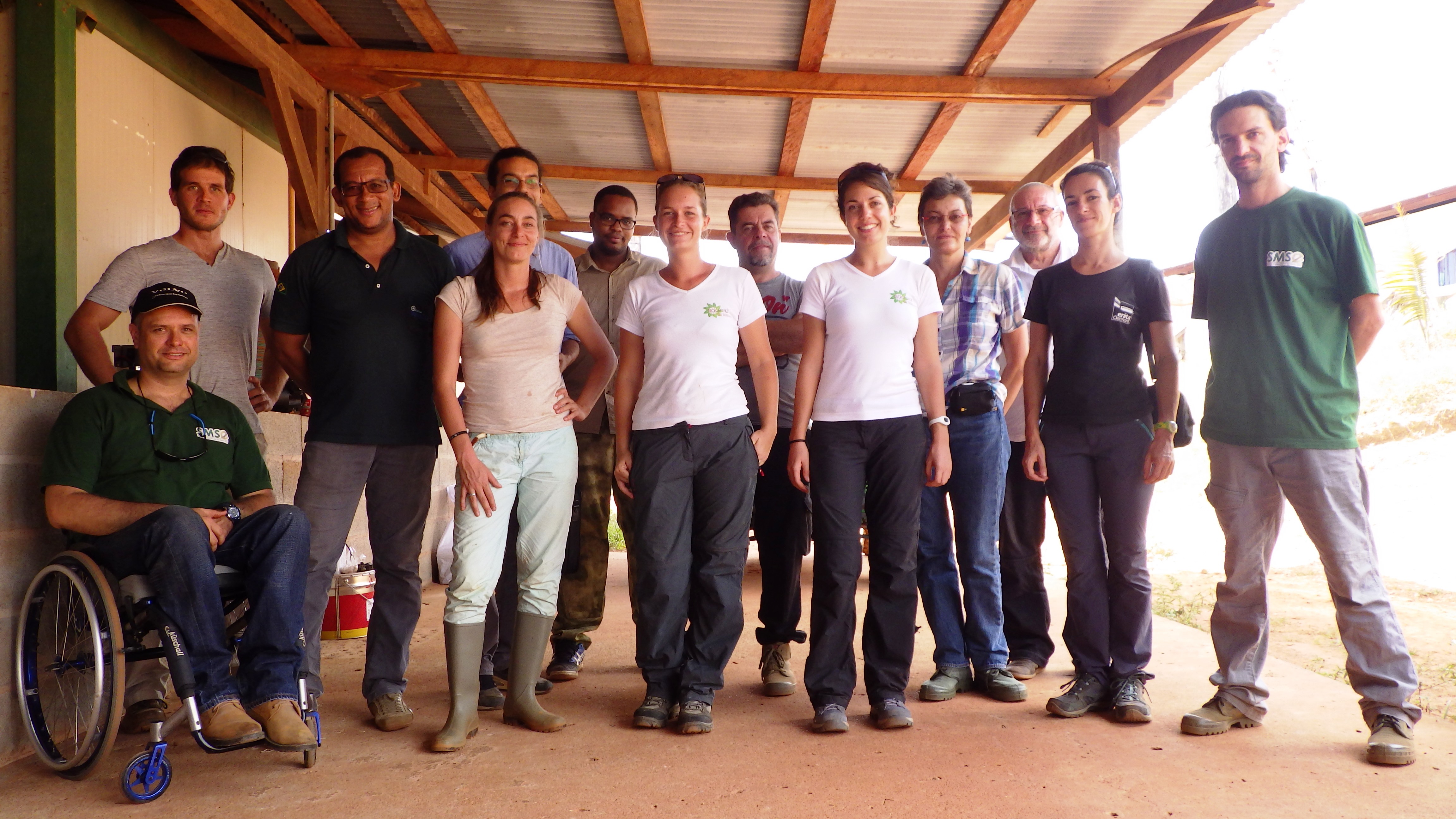
by Solicaz | Oct 30, 2015 | Uncategorized
On Wednesday, October 28, 2015, the final presentation of the results of the Guyafix (2012-2015) and MOM (2012-2014) projects to the CCIG (Chamber of Commerce and Industry of French Guiana) was presented to an official assembly of thirty people.
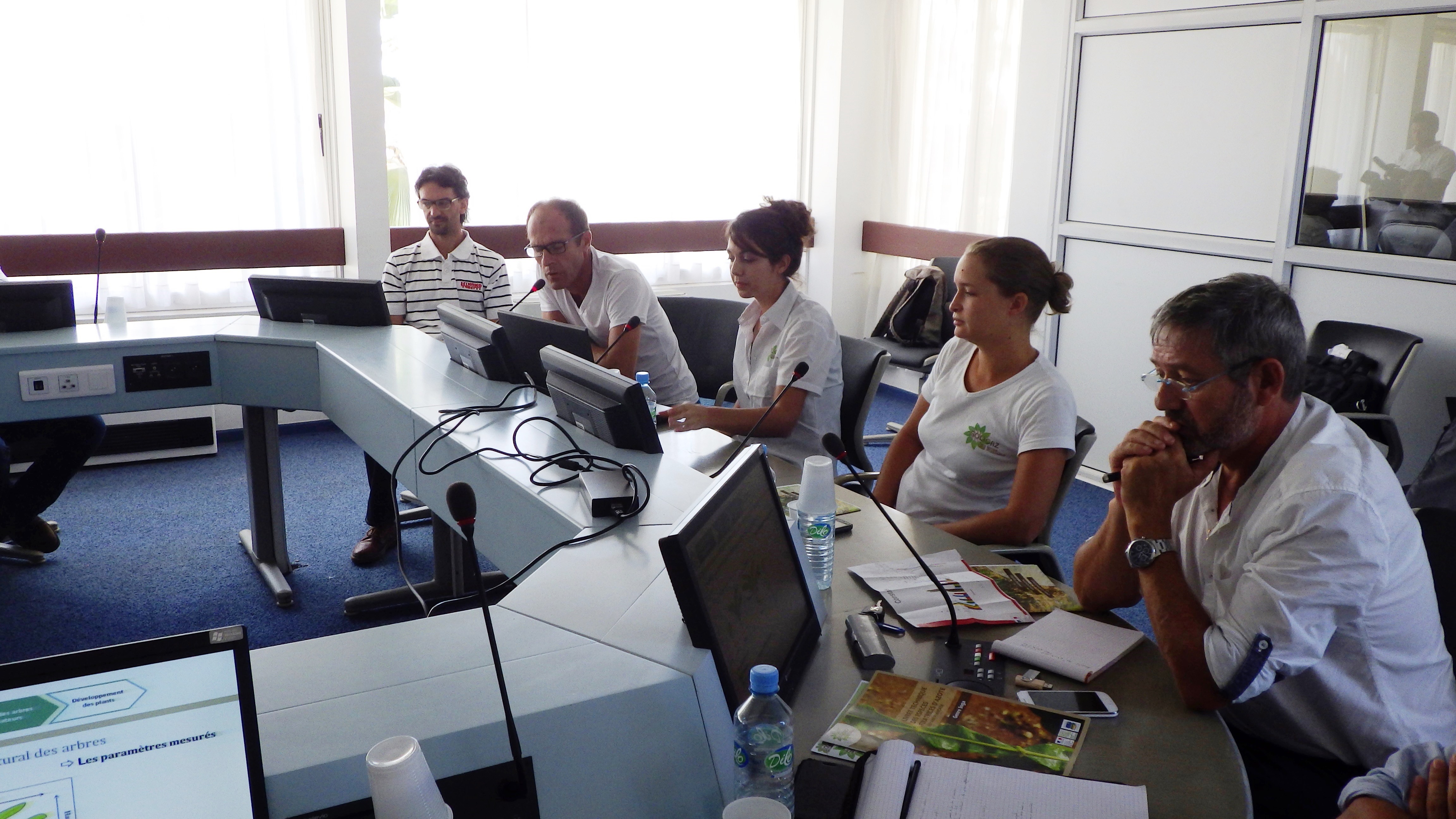
From left to right: A.CAILLEAU (SMSE), E.NICOLINI (CIRAD), G.PAUL and E.BRUNSTEIN (Solicaz), G.FAOUCHER (DEAL)
G.FAOUCHER, head of the DEAL mine department, introduced the projects with a brief reminder of the regulations concerning the rehabilitation and revegetation of mining sites: Gradually, during the exploitation, the sites must be rehabilitated and 30% of the rehabilitated surface must be revegetated; these projects were therefore intended to provide solutions towards this revegetation, which may prove difficult. Solicaz then presented its response to this problem, namely a “Selection of endogenous nitrogen-fixing plants from French Guiana for the restoration of degraded sites.”
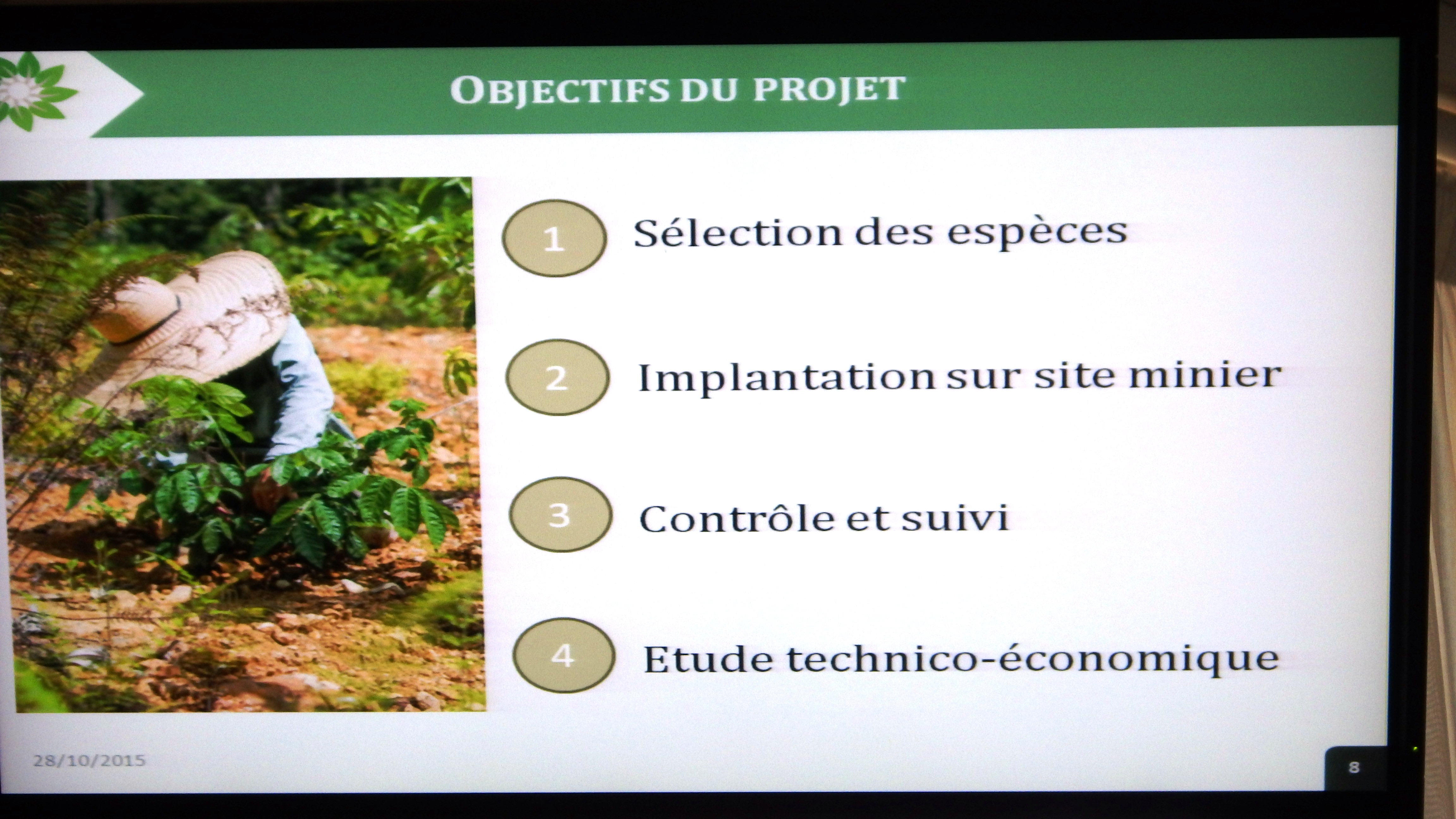
For the experiment, seven plants from French Guiana with the characteristics of being heliophilous, nitrogen-fixing, fast-growing and reproducible in nurseries were selected after tests for germination, propagation through grafting and efficiency of nitrogen fixation through nodules. The plants selected were: Clitoria fairchildiana, Inga leiocalycina, Inga ingoides, Inga edulis, Inga macrophylla, Inga pezizifera and Inga thibaudiana.
These species of Inga and Clitoria were then implanted on three plots of the SMSE (Saint-Elie’s Company of Mines) in order to track their transformation. A year later, the growth and vigor of the plants whose nodulation had been controlled by means of specific bacteria were already remarkable according to the CIRAD botanist, E. NICOLINI, who studied the architectural development of the plants. The physical, chemical and biological analyses of soils before and after the introduction of the nitrogen-fixing species have confirmed soil recovery, although the period is too short to certify a complete recovery of agronomic quality, which is visible at the end of six years. (Schimann, 2005).

Results on sites after two years of implantation
Finally, A.CAILLEAU, a geologist at the SMSE who followed and actively participated in the work of Solicaz shared his vision and total satisfaction with the results obtained after two years of planting. Nitrogen-fixing plants have fostered the establishment of new forest species in the areas in which they were established by enriching the soil and serving as shade for other plants.
Solicaz’s revegetation protocol is an efficient service that can benefit mining operators through autonomous or outsourced management.
The invitation to observe the revegetated sites was extended to the next day, Thursday, October 29, 2015 at the SMSE.
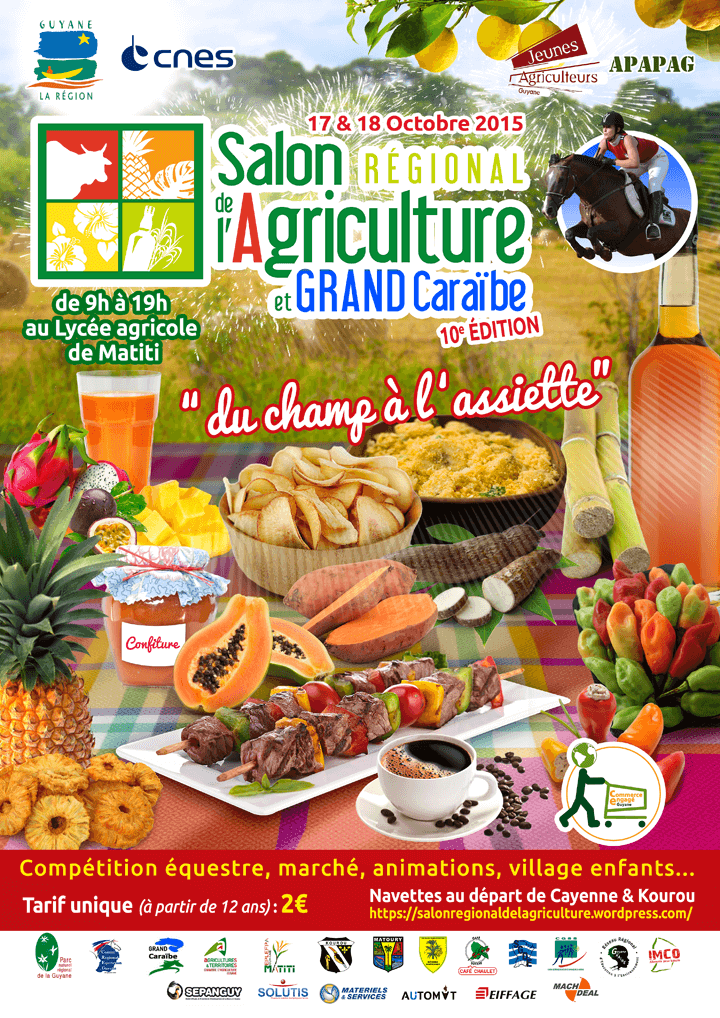
by Solicaz | Oct 19, 2015 | Uncategorized
On the weekend of October 17 and 18, 2015, Matiti Agricultural High School welcomed the general public for the tenth edition of the French Guiana Regional Agricultural Show from 9am to 7pm. The theme was the transformation of French Guianese agricultural products in order to create products such as corn fluour, cassava, chocolate, beer, honey, various liquors, etc.
The site was divided into several spaces: a craft and horticultural market, a center for transformation, a youth centre, a farm animal presentation centre, a restaurant zone, a relaxation area, an agro-suppliers area, a fairground for second-hand agricultural equipment, a centre of Producer Organizations and institutions, a training track and school for the Greater Caribbean competition.
Solicaz was positioned at the RITA stand (Network of Innovation and Agricultural Transport) along with several other partners where it presented the project and its objectives.
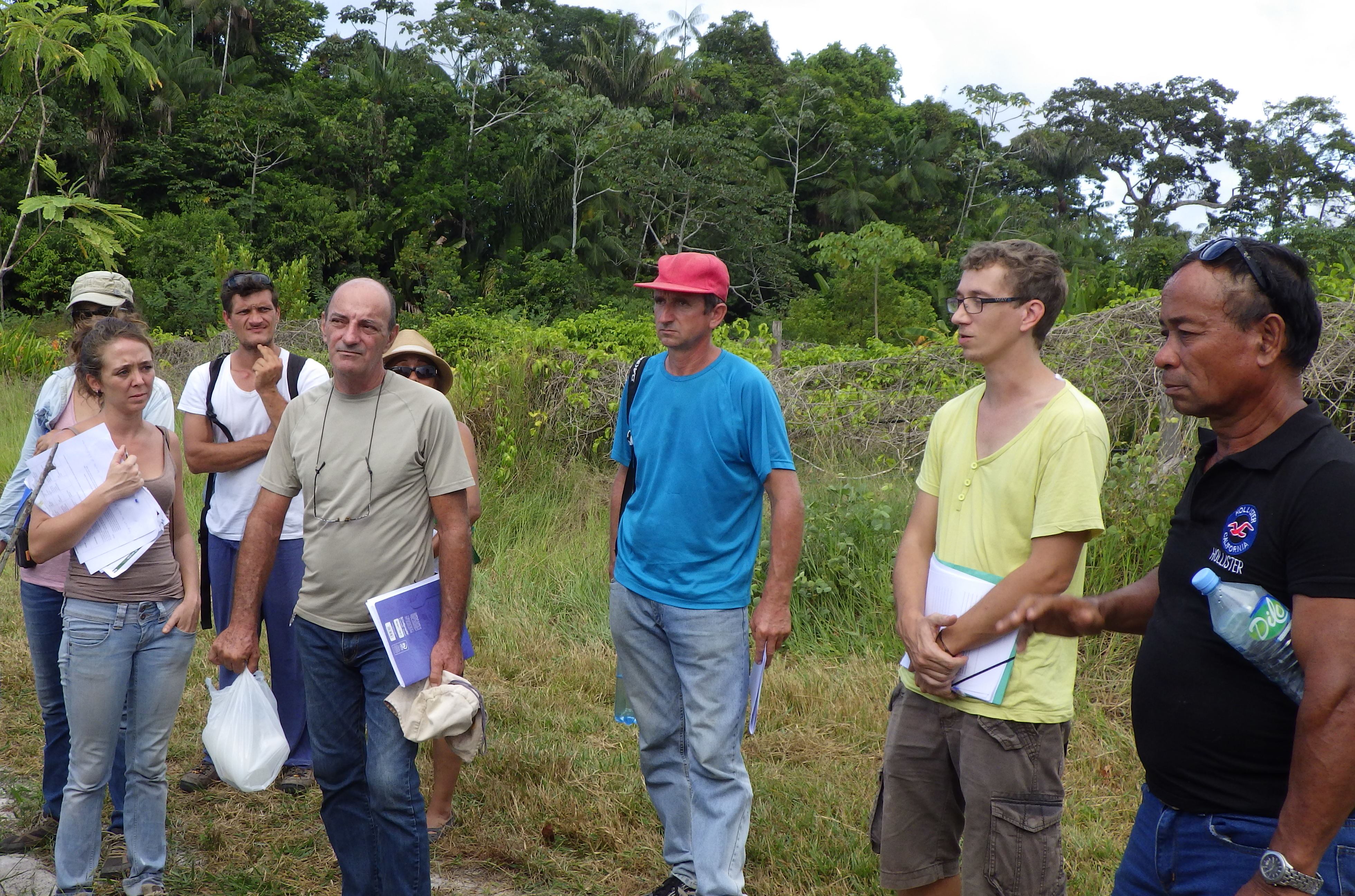
by Solicaz | Oct 12, 2015 | Agriculture/Agroforestry, News 2015
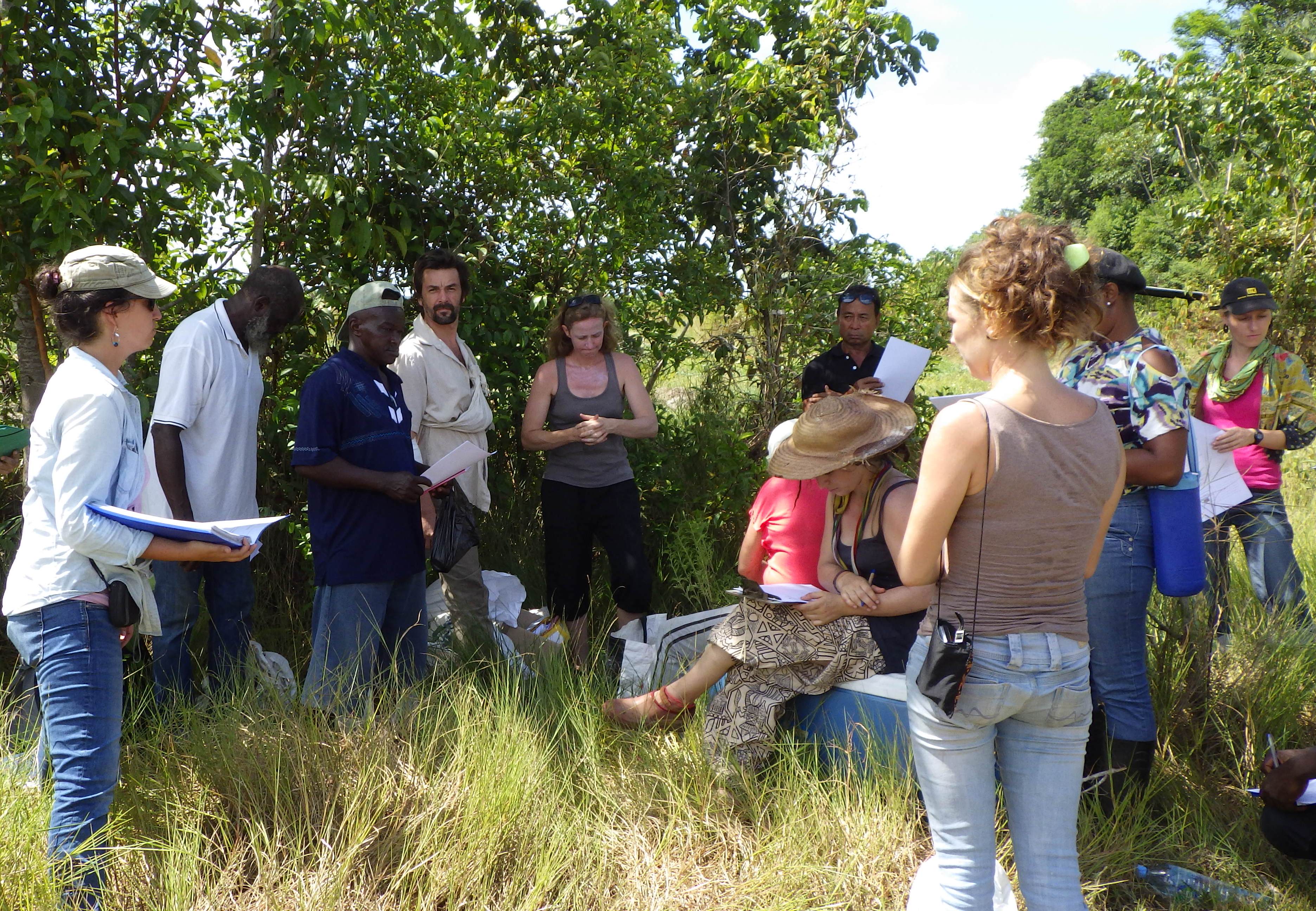
On the 9th of October 2015, at Matiti Agricultural High School, REAGI (The Trade Network in Intertropical Agro-Ecology) proposed a workshop on green manures and cover crops which brought together roughly twenty people from the agricultural world.
The subject was developed by L. DEMADE-PELLORCE from the InGaGen consultancy firm. InGaGen promoted the implementation of practices such as the use of green manures and cover crops while the students uncovered the IKARE plots at the high school, where some of the species may be found.
The plants employed are capable of providing agronomic services such as:
- soil protection by preventing runoff, erosion and improved water retention
- weed control by creating competition over light and available resources and control of pests
- improvement of physical and chemical properties (structure, soil stability, availability of nutrients) and fertility: increase of soil biological activity.
These plants can also be used for the production of biomass and fodder through:
- enhanced/ active fallow: i.e. the installation of inter-crop trees and/ or shrubs or use of herbaceous plants as a soil cover for protection and fertilization upon uncultivated land
- agro-forestry: the association of agricultural crops with perennial woody species with or without animals.
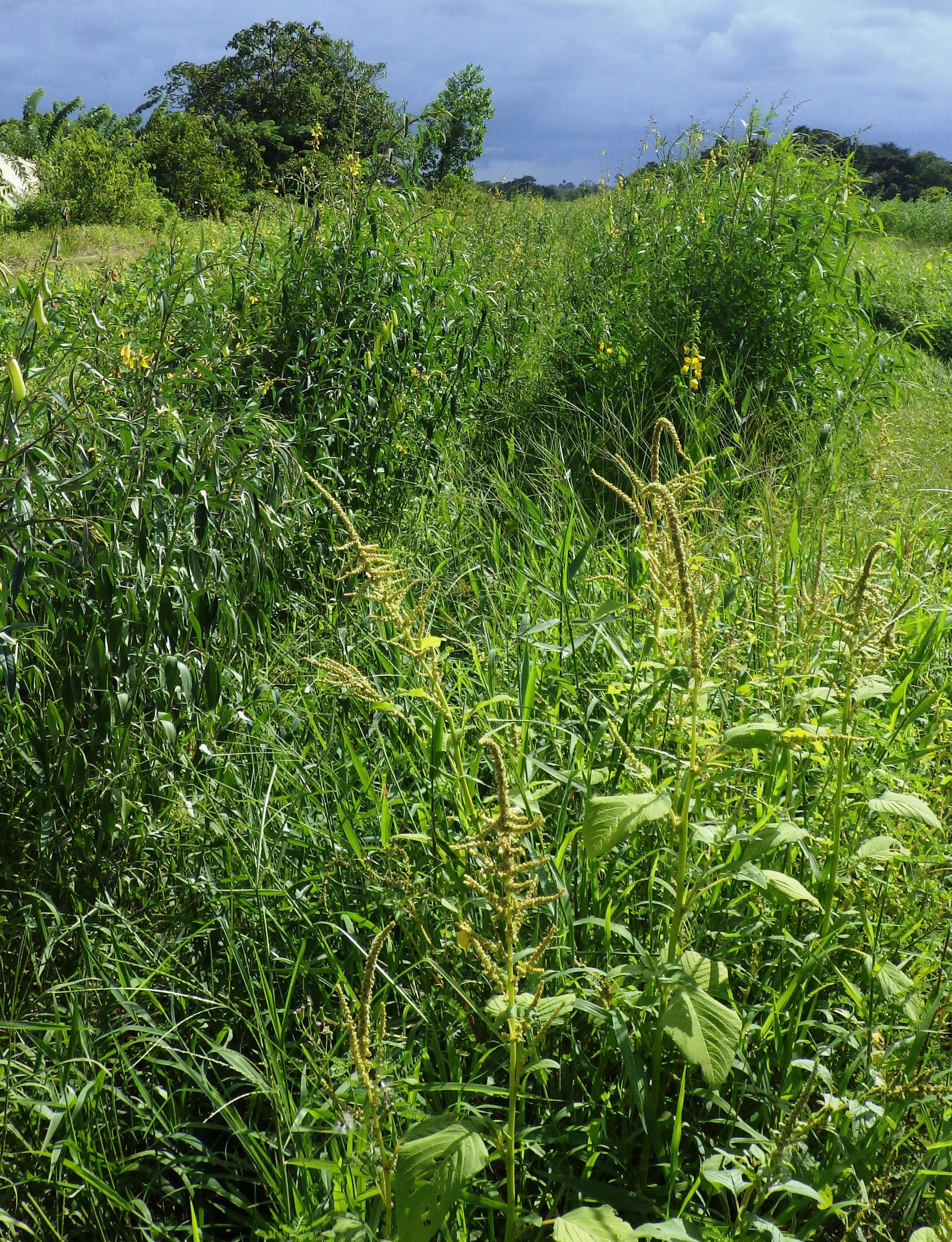
Species of interest, – available as seeds or graftings on the territory (such as Desmodium ovalifolium, Canavalia ensiformis, Alysicarpus vaginalis, Pintoin arachis, Bracharia ruzizienzis, Cajanus cajan, Crotalaria spectabilis, Crotalaria junceal and Calopogonium mucunoides), – were presented but during the establishment of an intercrop plant or of associated plants, the choice of the species is done primarily according to the objectives and constraints of the farmer. Then, the choice will depend upon the period of growth, the implementation strategy and whichever style of maintenance needs to be adapted.
Synthesis of local data on the main species (link in french)
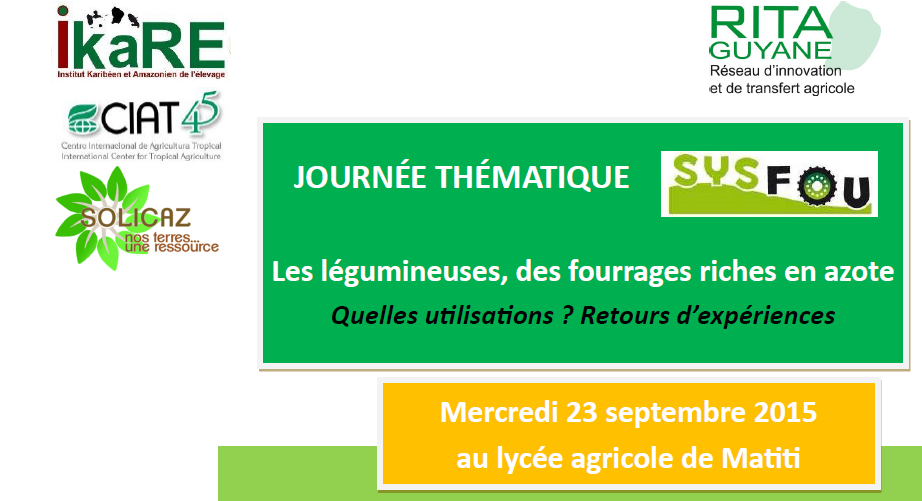
by Solicaz | Oct 9, 2015 | Agriculture/Agroforestry, News 2015
On September 23rd, 2015, Solicaz took part in the Legumes event at Matiti Agricultural High School, which brought together about 40 actors from the agricultural world.
The aim was to present the advantages of planting legumes in pastures, or on crop or fruit-growing plots to public farmers in French Guiana.
Rainer Schultze Kraft, an expert from CIAT (International Centre for Tropical Agriculture) who worked on a collection of tropical forage resources adapted to acid soils, presented a case study of successful agricultural association experiments in breeding / farming systems at the international level.
There at the Matiti Agricultural School, he highlighted the various benefits of using legumes, which improve soil fertility by providing organic matter, a structure for better soil conservation, erosion management and weed control. Legumes make it possible to produce forage of high nutritional value and high regeneration potential from a seed storage in the soil. They can also be used as an essential complement to traditional forage grasses, whose nutritional value decrease with age.
Rainer Schultze Kraft concluded his presentation by emphasizing that legumes are an important ally capable of increasing the production of meat, crops and/or trees in farming and other systems.
The guests were then able to see the fodder platform and the active fallow of the school before discovering the different experiments carried out by IKARE and SOLICAZ at the local level.

William Montaigne, Doctor of Ecology at Solicaz presented the results obtained on experiments whose aim was to improve the management of soil fertility in farming systems in French Guiana. For this purpose, an active fallow was set up with 3 legumes: Mucuna pruriens, Crotalaria ochroleuca and Cajanus cajan. After six months, high biomass production and improved soil fertility were observed as the control had been covered with weeds. The second experiment aimed to observe the impact of nitrogen fertilization on crops with a combination of Brachiaria humidicola and Desmodium ovalifolium. Two months after implantation, soil fertilization was already very promising and there was an improvement in the forage’s nutritional value.
Legumes allow for the sparing use of chemical fertilizers via their nitrogen fertilization capacities, which improves the intake and nutritious value of forage.

Géraldine PAUL, agricultural engineer at SOLICAZ has developed the subject of agroforestry by presenting legumes of Inga type, “sweet pea.” As part of an experiment, several species were planted on a soil that was deeply degraded. In two years, a biodiversity of flora and fauna (underground and aerial) reappeared.
Review of the day: Farmers benefit from including a legume species in their forage or crop systems. In addition to improving the structure and fertility of the soil, they save money and increase the yield of the meat, crops and biomass produced.










